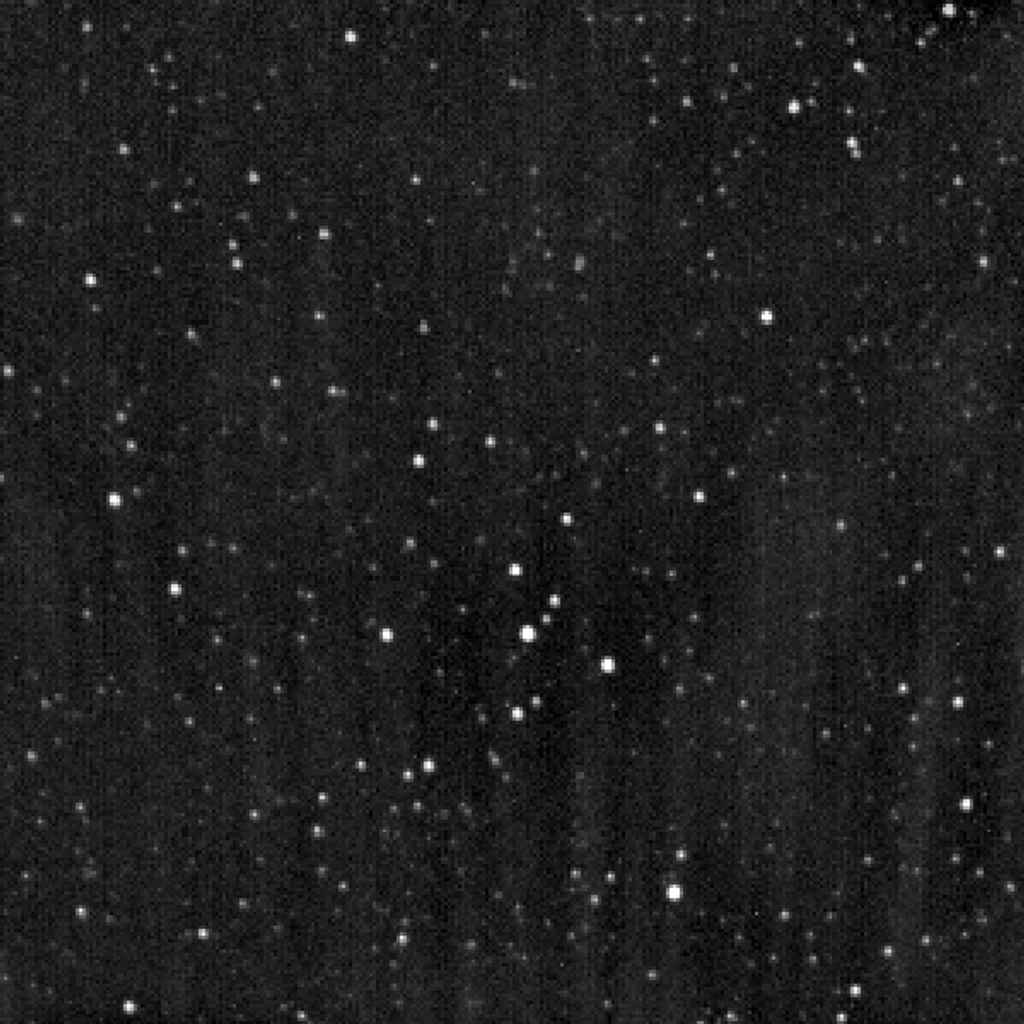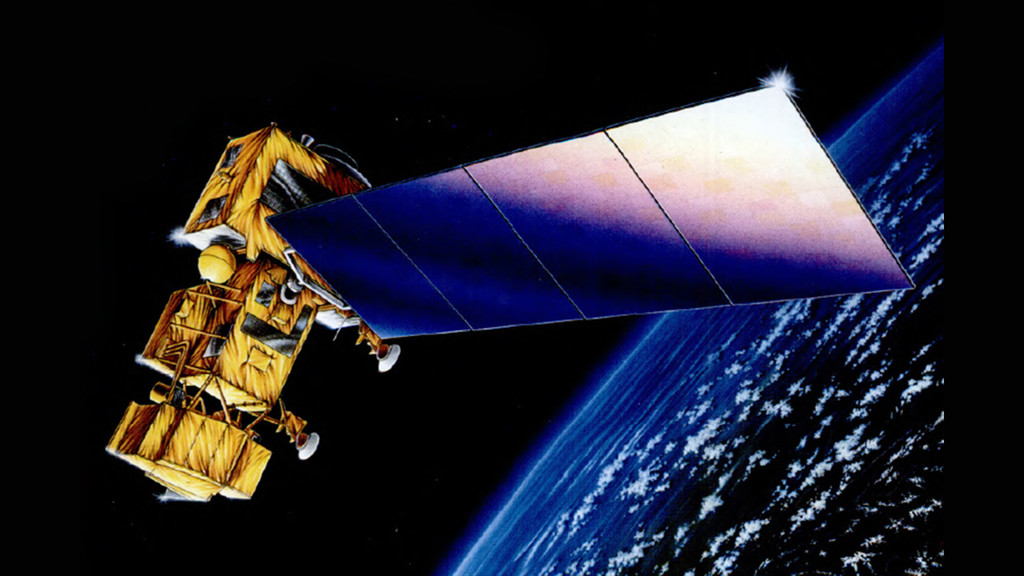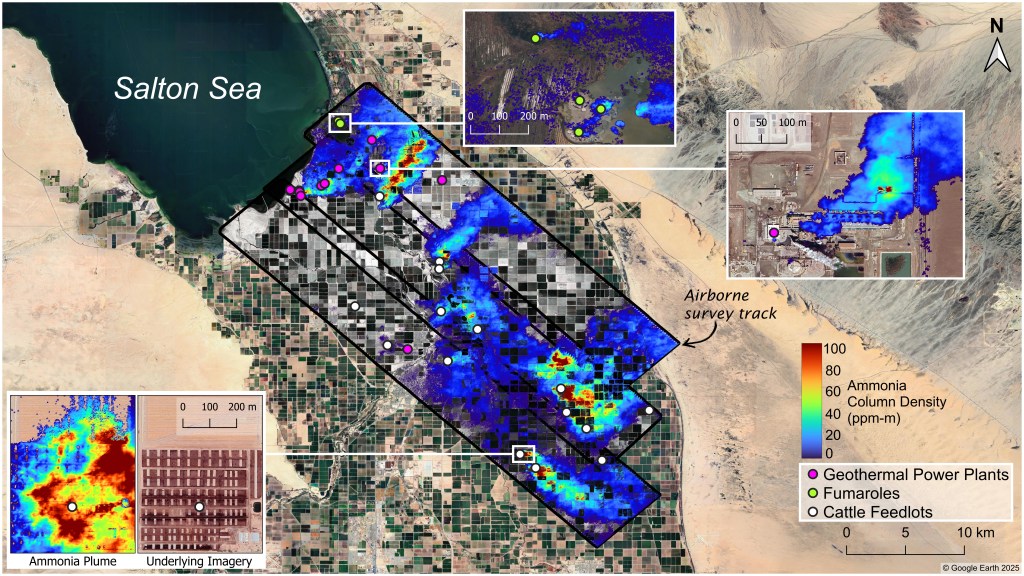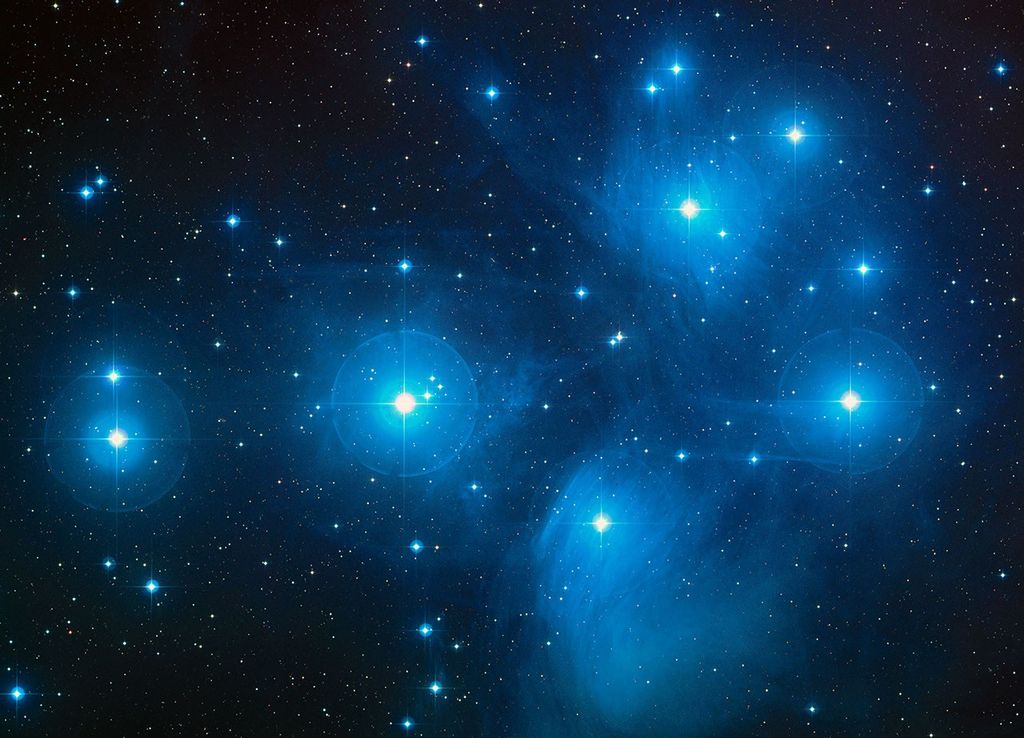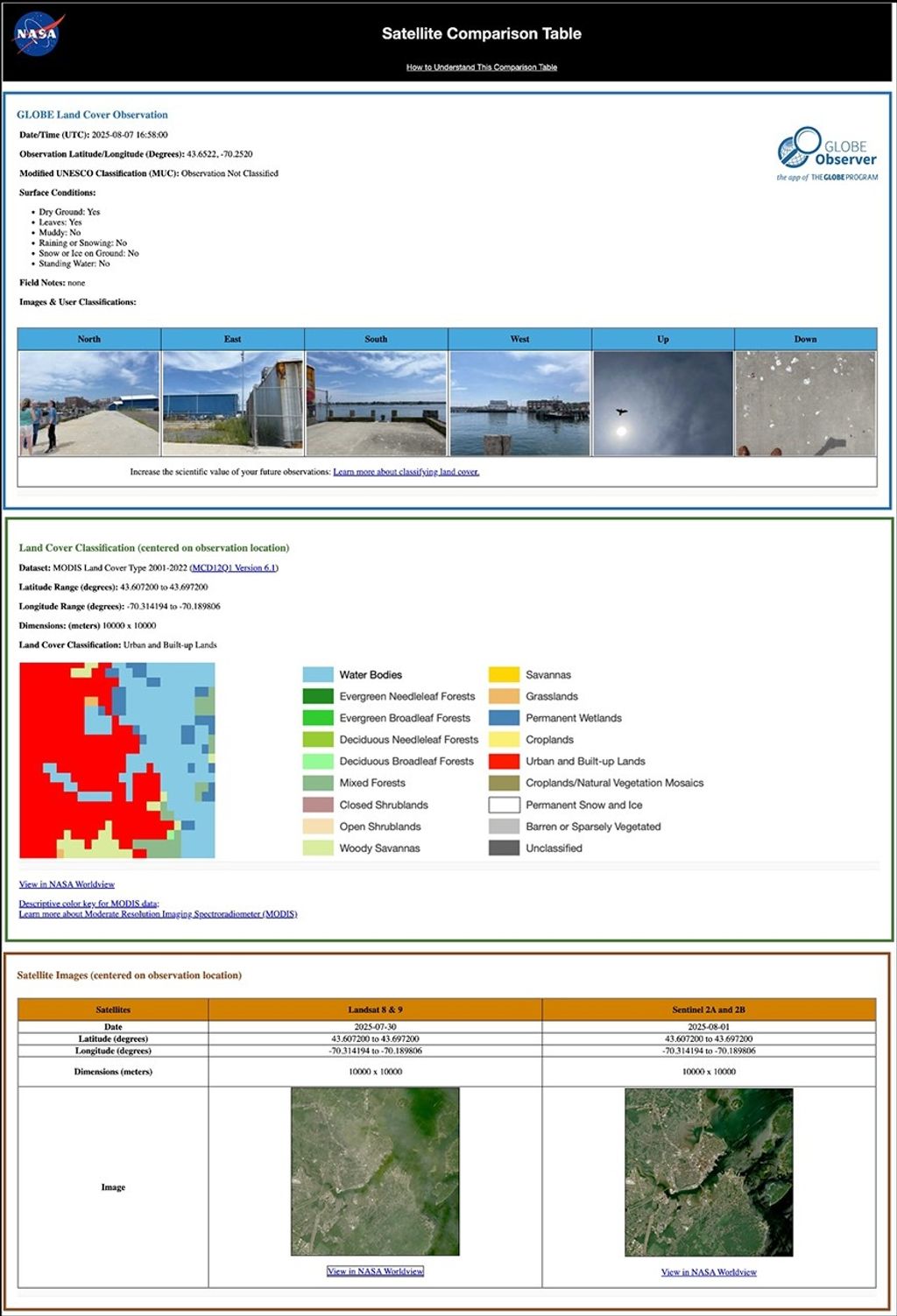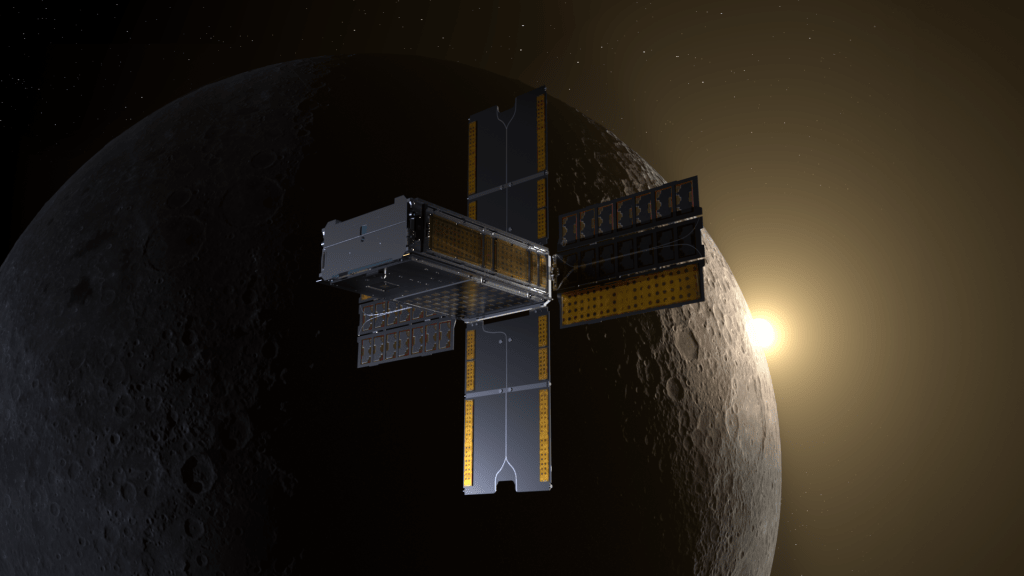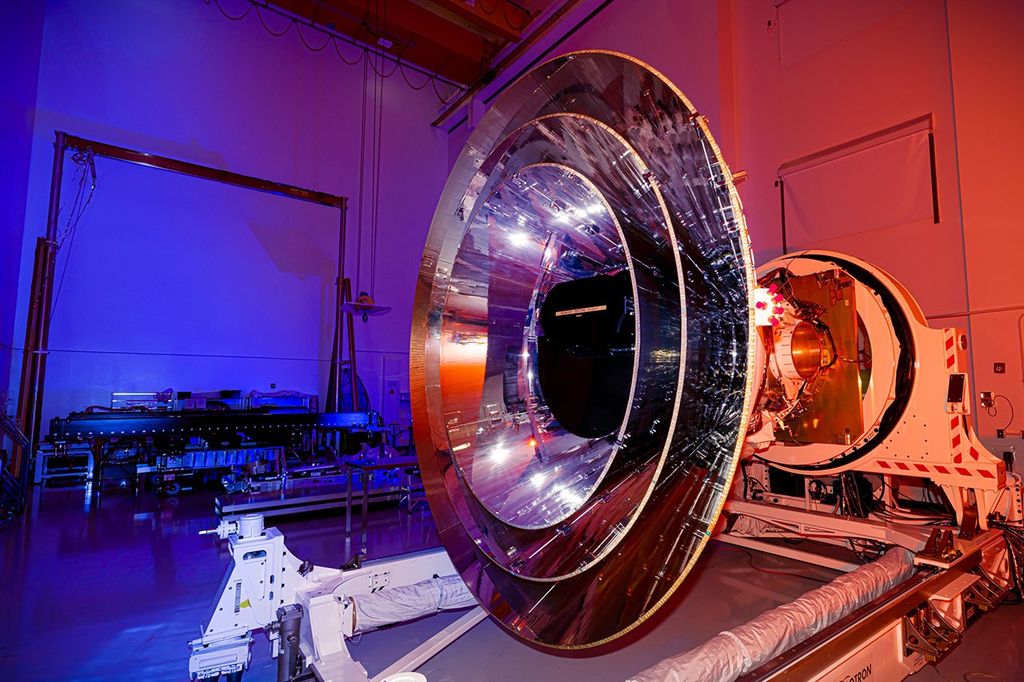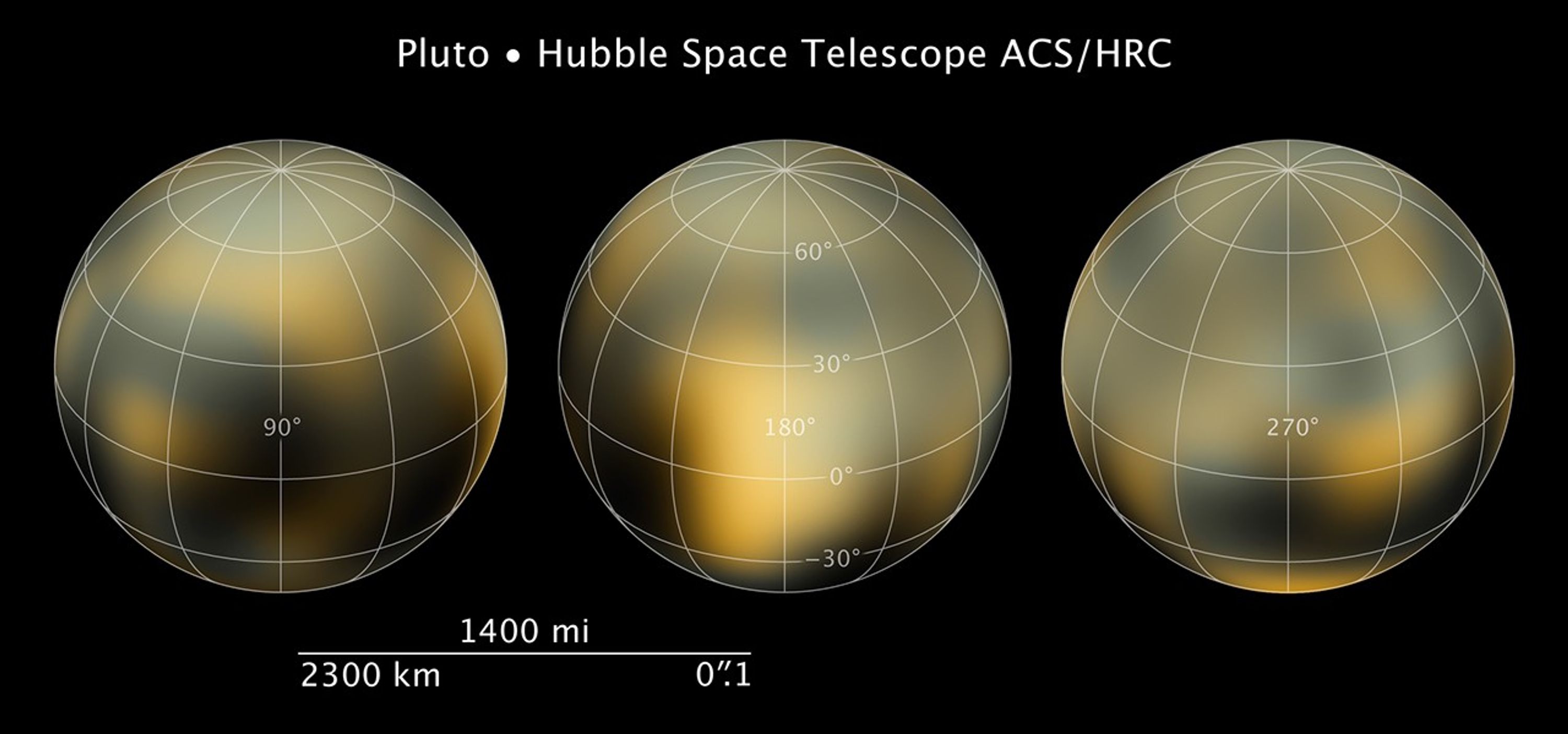1 min read
Pluto – HST – 90° Longitude

About the Object
- DistanceDistanceThe physical distance from Earth to the astronomical object. Distances within our solar system are usually measured in Astronomical Units (AU). Distances between stars are usually measured in light-years. Interstellar distances can also be measured in parsecs.Pluto is on an eccentric orbit that varies between 29.6 AU and 49.3 AU from the Sun. The average distance during the time of these observations was 30.6 AU (Jan. 2003). In 2010, Pluto is 31.8 AU from the Sun and moving away. It will reach its furthest distance from the Sun in 2130.
- DimensionsDimensionsThe physical size of the object or the apparent angle it subtends on the sky.Pluto has a diameter of roughly 1,440 miles (2,320 km) at the equator.
About the Data
- Data DescriptionData DescriptionProposal: A description of the observations, their scientific justification, and the links to the data available in the science archive.
Science Team: The astronomers who planned the observations and analyzed the data. "PI" refers to the Principal Investigator.The image was created from Hubble data from proposals 5330: A. Stern (Southwest Research Institute), L. Trafton (University of Texas, Austin), and M. Buie (Southwest Research Institute); and 9391: M. Buie (Southwest Research Institute), W. Grundy (Lowell Observatory), and E. Young, L. Young, and A. Stern (Southwest Research Institute). The science team comprises: M. Buie (Southwest Research Institute), W. Grundy (Lowell Observatory), and E. Young, L. Young, and A. Stern (Southwest Research Institute). - InstrumentInstrumentThe science instrument used to produce the data.HST>ACS/HRC
- Exposure DatesExposure DatesThe date(s) that the telescope made its observations and the total exposure time.June 2002 - June 2003
- FiltersFiltersThe camera filters that were used in the science observations.F435W (B) and F555W (V)
- Object NameObject NameA name or catalog number that astronomers use to identify an astronomical object.Pluto
- Object DescriptionObject DescriptionThe type of astronomical object.Dwarf Planet
- Release DateFebruary 4, 2010
- Science ReleaseHubble Maps of Pluto Show Surface Changes
- Credit

The image is a composite of separate exposures made by the ACS/HRC instrument on the Hubble Space Telescope. Two filters were used to sample broad wavelength ranges. The color results from assigning different hues (colors) to each monochromatic image. In this case, the assigned colors are: Blue: F435W (B) Green: F555W (V)
Related Images & Videos
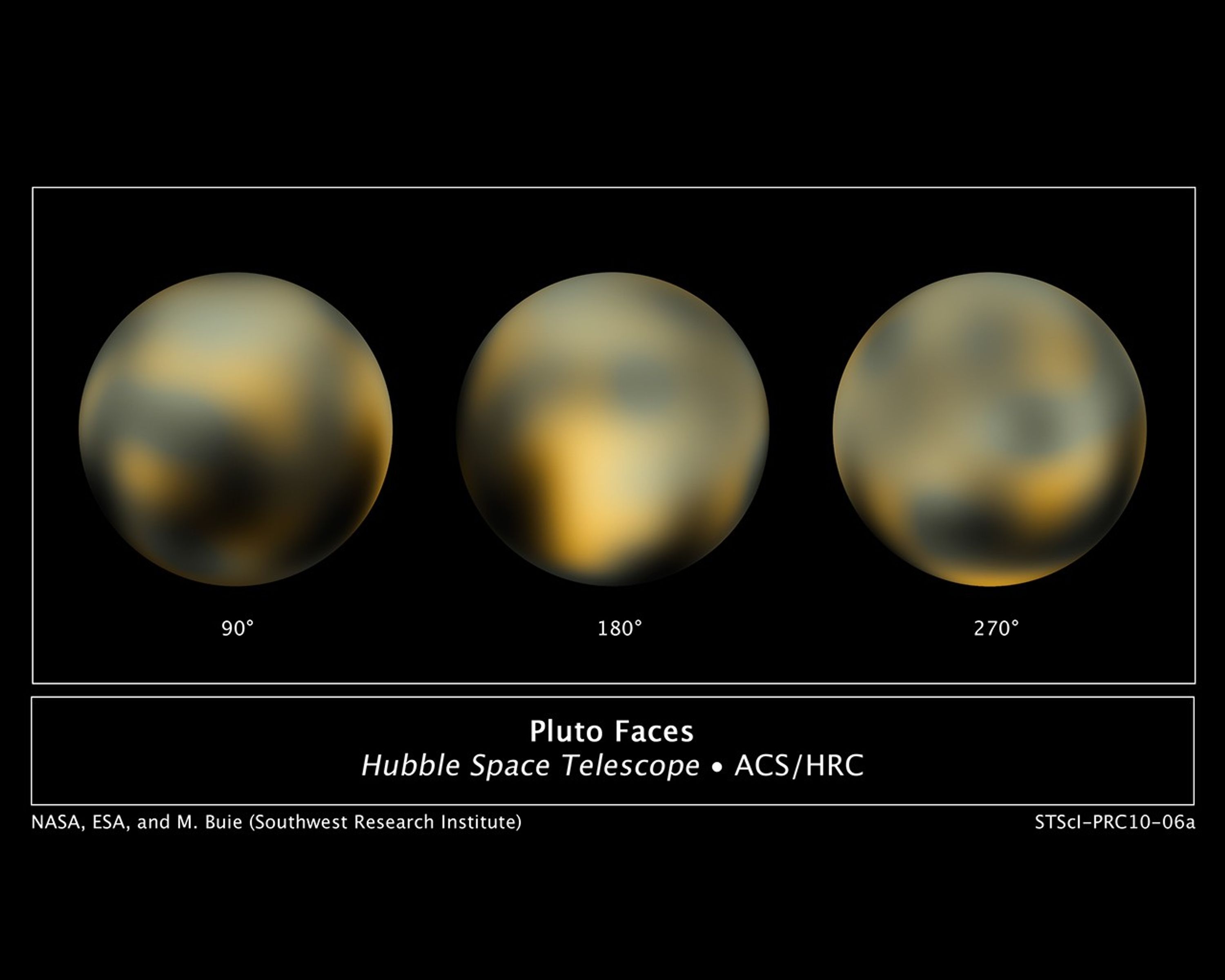
The Changing Faces of Pluto
This is the most detailed view to date of the entire surface of the dwarf planet Pluto, as constructed from multiple NASA Hubble Space Telescope photographs taken from 2002 to 2003. Hubble's view isn't sharp enough to see craters or mountains, if they exist on the surface, but...
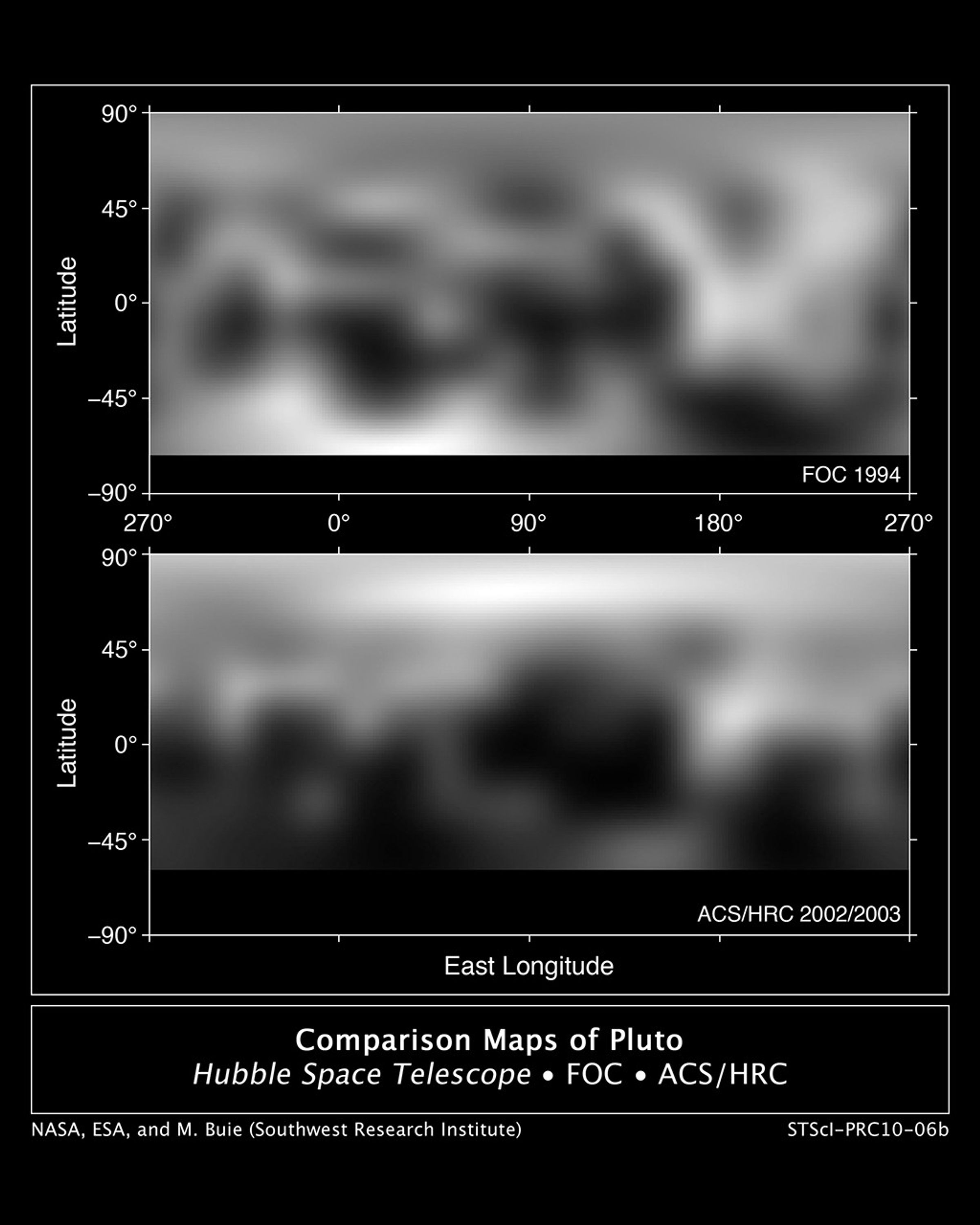
Hubble Maps Pluto's Changing Surface
These are two Hubble photo maps of the dwarf planet Pluto, as seen in 1994 and 2002-2003. Hubble's view isn't sharp enough to see craters or mountains, if they exist on the surface, but Hubble does reveal a complex-looking and variegated world with white and charcoal-black...
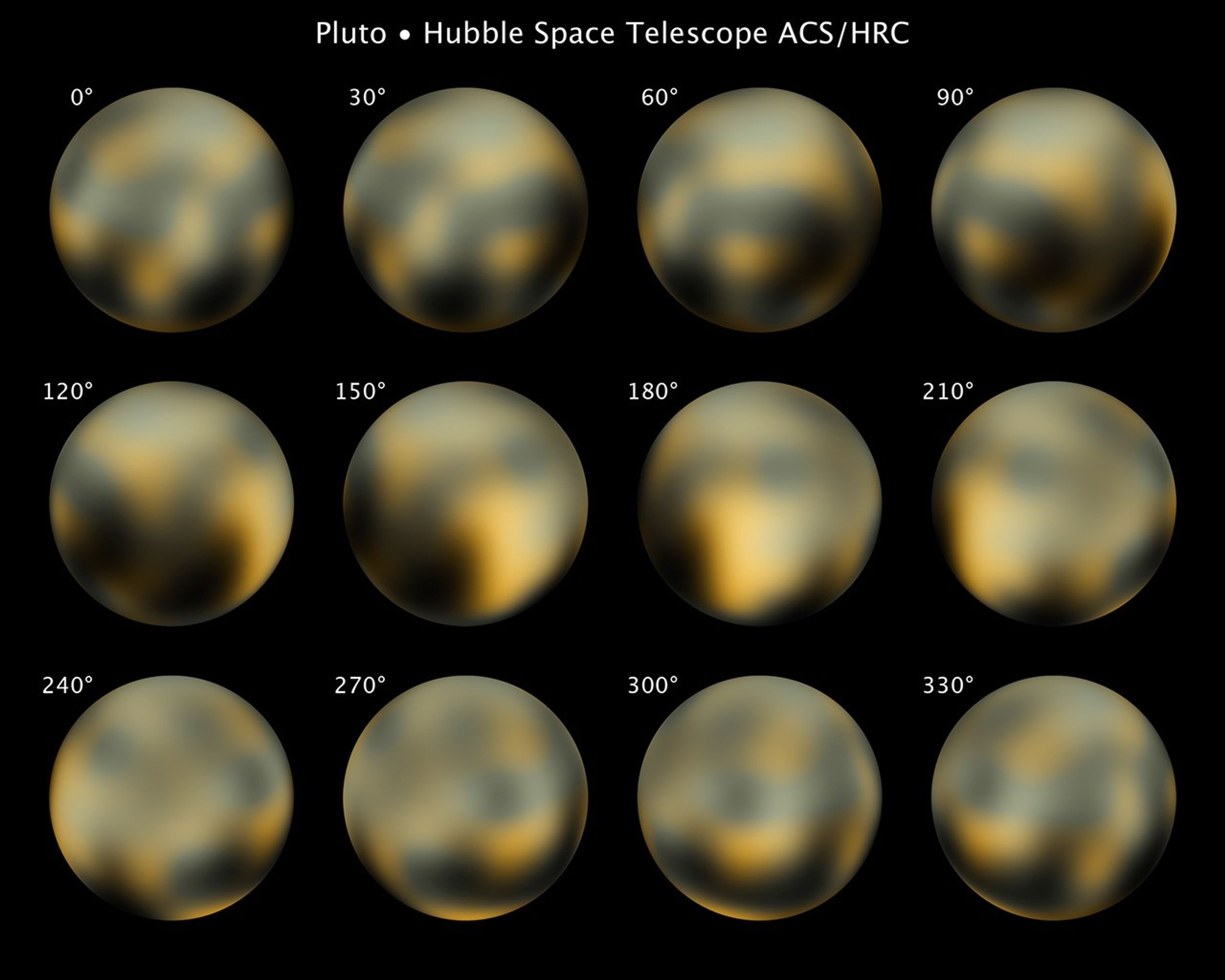
Hubble's Full Photomap of Pluto
This is the most detailed view to date of the entire surface of the dwarf planet Pluto, as constructed from multiple NASA Hubble Space Telescope photographs taken from 2002 to 2003. NASA's New Horizons space probe, now halfway to Pluto, will get sharper images of Pluto when it...

Hubble Reveals Pluto's Changing Surface
This video describes how NASA's Hubble Space Telescope has provided increasingly better pictures of Pluto since the telescope's launch into Earth orbit in 1990. Since its discovery in 1930, Pluto has been a speck of light in the largest ground-based telescopes. But the Hubble...
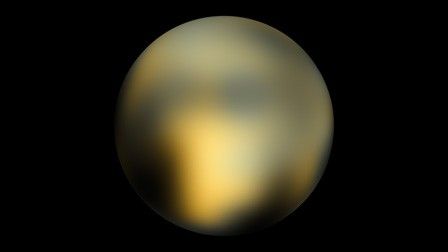
Photo-Mapped Pluto Globe
This is the most detailed view to date of the entire surface of the dwarf planet Pluto, as constructed from multiple NASA Hubble Space Telescope photographs taken from 2002 to 2003. Hubble's view isn't sharp enough to see craters or mountains, if they exist on the surface, but...
Share
Details
Claire Andreoli
NASA’s Goddard Space Flight Center
Greenbelt, Maryland
claire.andreoli@nasa.gov






